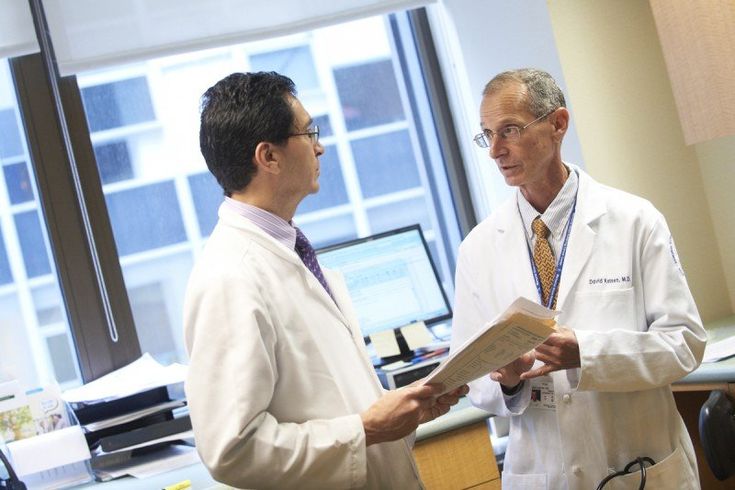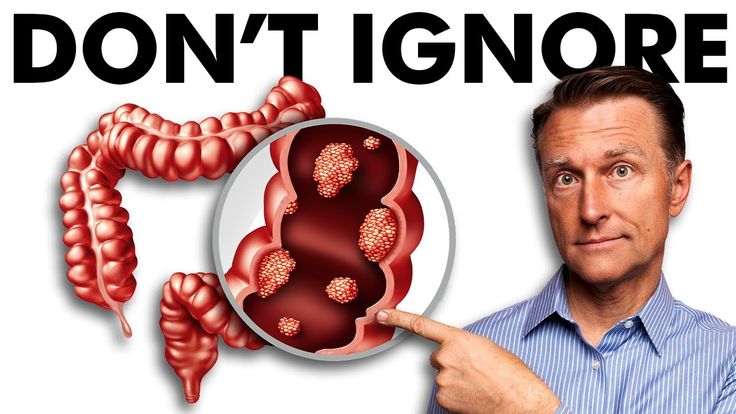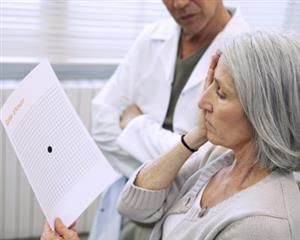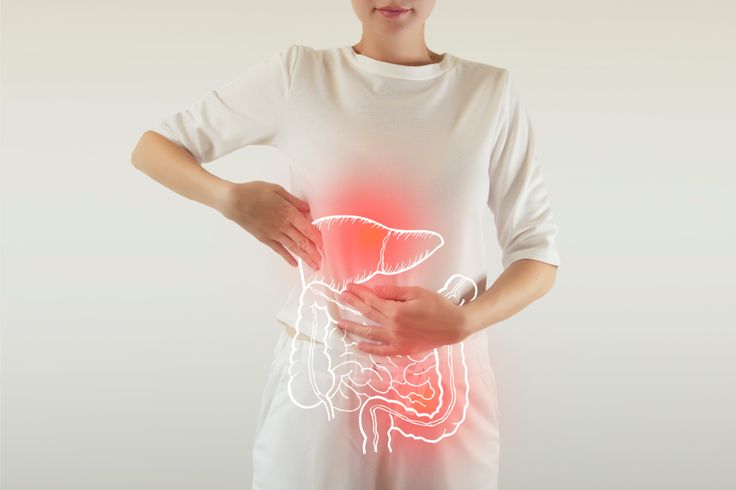It is important to know all the forms and characteristics of liver cancer in women to treat it correctly and improve the patient’s prognosis. Even though the liver is one of the few organs that can regenerate itself, cancer cells interfere with that. These understandings are the basis for medical approaches to fighting this serious illness.
Liver cancer starts when the DNA in liver cells mutates and the cells begin to multiply uncontrollably and form tumors. This type of malignancy mainly grows as hepatocellular carcinoma or intrahepatic cholangiocarcinoma, with different characteristics that may affect the diagnosis and treatment.
Liver Cancer: What You Need to Know
Liver cancer in women is the unrestricted growth of mutated cells in the liver, which happens to perform many important functions, such as detoxification, and protein synthesis.

The most common type of liver cancer is hepatocellular carcinoma, which begins in the hepatocytes (liver cells) Other rarer forms include cholangiocarcinoma (which starts in the bile ducts) and angiosarcoma (which begins in the blood vessels of the liver).
There are many contributing factors to these cancers, such as liver disease (i. e. cirrhosis), and of course, some lifestyle choices. Cancerous growths often impede the liver’s regenerative capabilities, which then cause functional impairments.
The earlier the cancer is detected and recognized, the earlier the appropriate treatment can be initiated, whether it be surgical resection, local control measures, or systemic therapy.
Survival Rates for Liver Cancer: What the Numbers Tell Us
Liver cancer survival rates are based mostly on the stage of the cancer at the time of diagnosis and the general health of the patient.

Liver cancer in women in its early stage has a better prognosis, and with surgical resection or liver transplantation, the patient may have a chance of long-term survival.
But stage 4 liver cancer is not a pretty situation, because it usually has already spread and the treatment options are not as effective. The 5-year survival rate for localized liver cancer is approximately 31% but this drops to approximately 3% if the cancer has metastasized to distant sites.
Which depends on the patient’s overall health, liver function, and how the patient responds to treatment. That only emphasizes the need for constant research and innovation in the battle against liver cancer in women.
When it comes to liver cancer in women , tales of people who have survived for years and years serve as a ray of light. Medical science has come so far and with early detection, some people have defied the odds of the expected life span with a liver cancer in women diagnosis.
Stage 4 Liver Cancer: Challenges and Expectations
Stage 4 liver cancer is an extremely advanced stage of the disease, and at this point, it has generally metastasized, or spread, to other organs in the body.

Medical treatment at this point changes from curative to palliative, or in other words, just controlling the symptoms and making the person’s life as comfortable as possible. Physical ailments like pain fatigue and stomach problems can be debilitating and require major amounts of control.
There are various types of treatment including targeted therapy,
- Immunotherapy
- Chemotherapy
But then again so is the emotional and psychological toll, not only on the patients themselves but also their families, who have to endure this diagnosis.
The care of advanced liver cancer in women is complex and requires a multidisciplinary team including oncologists, palliative care physicians, and numerous support services to address the myriads of problems that advanced liver cancer brings to the table.
Skin Rash and Liver Cancer: Is There a Connection?
Although not a classic sign, skin rash can sometimes be related to liver cancer in women. This relationship tends to come up when liver function is compromised, and the body can’t rid itself of toxins, which in turn shows up on the skin.

Also, some of the treatments for liver cancer in women, like chemotherapy or targeted therapy, can have side effects that affect the skin. So, tracking any rashes becomes important, especially if there are other symptoms of liver cancer, such as :
- Jaundice
- Abdominal pain
If these symptoms appear it is necessary to seek the advice of medical professionals for a complete examination because these may be signs of liver cancer in women.
Causes of Liver Cancer: Risk Factors and Prevention
Liver cancer in women has multifactorial causes but two of them are chronic hepatitis B or C infections, which greatly increase the risk. And then the second one is cirrhosis, which comes from too much drinking.

Another one that has come up more and more in recent years is non-alcoholic fatty liver disease (NAFLD), which is closely related to obesity and diabetes. There are some hormonal treatments and estrogen levels that can affect liver cancer risk in women.
The preventive measures include getting a hepatitis B shot, maintaining a healthy weight, not drinking too much alcohol, and avoiding contact with known carcinogens.
Periodic check-ups and liver tests for those who have a history of liver problems are important to catch anything early, or better yet, prevent it.
Symptoms of Liver Cancer in Females: What to Watch For
Liver cancer In women often presents subtly, making vigilance essential. These are also common complaints such as loss of appetite and weight loss which seem minor but continue for some time. Any upper abdominal pain or swelling, usually on the right side, can be a sign of liver problems.

Fatigue and weakness are also common complaints that should not be overlooked. Some women also have jaundice, which is yellow skin and eyes with dark urine and pale stools. So also, can a random skin rash or itch, due to liver malfunction.
Effective Treatment Options for Liver Cancer
Liver cancer is treated differently depending on how far it has progressed and how healthy the patient is. During its initial stages, surgical resection is quite successful, and this involves removing the malignant part of the liver. Liver transplantation is another curative approach, particularly in those with localized tumors.

For nonsurgical candidates, there are ablative techniques such as radio frequency ablation (RFA) and microwave ablation that directly kill cancer cells with heat.
These techniques are embolization procedures and include trans arterial chemo-embolization (TACE) and radio embolization, which cut off the blood supply to the tumor to prevent further growth. systemic therapies such as targeted and hypnotherapy are becoming more popular, especially in advanced stages.
They either block certain molecules that contribute to tumor growth or help to stimulate the immune system.
New hope continues to arise with experimental therapies and clinical trials, constantly testing the limits of liver cancer treatment. With hepatologists, oncologists, and surgeons all working together to give each patient the individual care plan that is best for them.
When it comes to liver cancer in women , tales of people who have survived for years and years serve as a ray of light. Medical science has come so far and with early detection, some people have defied the odds of the expected life span with a liver cancer in women diagnosis.
Like liver transplant patients, or people who have undergone more experimental treatments, such as targeted therapy or immunotherapy. Their strength suggests the necessity of individualized treatment and continual reassessment.
Their tales make it clear that while liver cancer is by no means anything to be taken lightly, encouraging treatments and total care can truly make an about-face.
Early Signs of Liver Cancer: Detecting the Disease Early
Liver cancer’s in women subtle symptoms are very deceptive because they can be so mild that they are mistaken for minor ailments.
The first symptoms include continuous pain or a dull ache in the upper right quadrant of the abdomen, which can be mistaken for indigestion.

Unintentional weight loss and loss of appetite could also be some of the earliest signs. Some people may complain of swelling or a feeling of fullness because of a large liver or spleen.
Fatigue that is chronic and seems out of proportion to the activity during the day is another red flag for potential problems.
Sometimes jaundice, or the yellowing of the skin and eyes, can occur. The subtlety of these symptoms should remind those who are at risk of regular medical check-ups and liver screening to catch it early.
Is Liver Cancer Painful? Understanding the Physical Impact
Liver cancer pain is not a simple issue, it depends on the size of the tumor, location, and how much it has spread.

At first, the pain is just a dull ache in the upper right abdomen, but as the cancer progresses, the pain becomes more intense and constant. This is usually because the tumor is pushing against some other tissue. After all, the tumor is causing the liver to enlarge.
Unless the spread is metastatic, to bones or other organs, it hurts a lot. It is crucial to get the pain under control, which can be accomplished by analgesics and anti-inflammatory drugs, non-pharmacological modalities would include physical therapy and relaxation techniques.
Pain has to be managed as a whole to maintain the function and the quality of life.
Genetic Factors in Liver Cancer: Are You at Risk?
Liver cancer is not usually inherited; however, some genetic factors can make a person more likely. Some of the known genes that regulate cell growth and division, which when mutated are linked to an increased risk of liver cancer in women are TP53 and CTNNB1.

Other than that, there are some hereditary conditions such as hemochromatosis which leads to excessive iron in the liver that can also lead to this type of cancer. It is important, especially for those with a family history of liver problems or liver cancer in women.
Genetic counseling and testing can provide insights into individual risk, enabling more personalized monitoring and preventive measures.
How Liver Cancer Begins: The Initial Stages
Liver cancer starts at the cell level, genetic mutations cause cells to grow abnormally. These mutations interfere with the normal function of the cell and, in turn, cause the liver cells to divide abnormally and without control.
Many times, this malignant transformation begins insidiously. without any obvious signs, and thus early detection becomes a phantom.
Chronic liver diseases like hepatitis B or C infection and cirrhosis serve as a field where these genetic mutations can flourish. The accumulation of these mutations over time causes small nodules or tumors to form in the liver.
Other environmental factors that contribute to the risk include exposure to carcinogens such as aflatoxins, or excessive alcohol consumption, both of which damage liver cells and encourage mutation.
Also, metabolic disorders such as non-alcoholic fatty liver disease (NAFLD) can cause inflammation and cellular changes that might eventually lead to cancer.
It is a well-known fact that the liver has a huge ability to regenerate itself, which is for the most part a good thing. Regenerative ability can sometimes hurt as it is the same process that tries to repair damaged tissue. It can spread these mutated cells.
Liver cancer in women in the early stages may only consist of microscopic clusters of malignant cells, which are typically unnoticed during a regular checkup. Early changes like these are detected through advanced imaging techniques and constant surveillance of high-risk patients.
Frequent screening, which is especially important for those with risk factors, can catch liver cancer in its early stages before it becomes so advanced.
This knowledge informs preventive strategies and underscores the importance of proactive health management, particularly for those at elevated risk.
Age and Liver Cancer: When Are You Most at Risk?
Liver cancer predominantly affects older adults, with the majority of cases diagnosed in individuals over 60.

However, age is not the sole determinant. Liver cancer in women is also becoming more prevalent in younger adults, because of the increase in such conditions as non-alcoholic fatty liver disease (nafld) and chronic hepatitis infections which can lead to liver cancer at any age.
Liver cancer in women occurs as the body ages and the combined effects of environmental exposures, lifestyle choices, and genetic predispositions become more prominent.
Chronic alcohol use and prolonged exposure to hepatotoxins such as aflatoxins can also heighten this risk in aged individuals. Besides, at the same time, the immune system becomes less efficient with age, so the body may not be as able to ward off malignant processes.
Regular liver health screenings are essential, especially for individuals with risk factors such as a history of liver disease, heavy alcohol use, or metabolic syndromes.
Conclusion
However early detection is still the key because liver cancer in women is one of those diseases that doesn’t present any symptoms until the late stages. Knowing those risks allows for more targeted preventive measures and screening.
A healthy lifestyle, active management of chronic conditions, and regular contact with a physician can greatly reduce the risk, no matter what the age. Therefore, even though liver cancer mainly occurs in older people, awareness and preventative medicine are a necessity in all ages to combat this powerful disease.
People Ask Question
How does liver cancer affect women differently than men?
While men are generally more likely to develop liver cancer, women’s hormonal differences, reproductive health factors, and metabolic conditions like fatty liver disease can influence liver cancer risk and progression. Some studies suggest women may respond differently to treatment, though more research is needed.
What are the treatment options for liver cancer in women?
Treatment options include surgery to remove the tumor, liver transplant, ablation or embolization therapies, targeted drug therapy, immunotherapy, chemotherapy, and radiation. The choice of treatment depends on the cancer stage and overall health of the patient.
Can liver cancer in women be prevented?
Preventive measures include getting vaccinated for hepatitis B, avoiding heavy alcohol consumption, maintaining a healthy weight, managing diabetes, and avoiding exposure to harmful chemicals. Regular screenings for those at high risk, like hepatitis patients, can also aid in early detection.
What is the life expectancy of women with liver cancer?
Life expectancy varies depending on the stage of the cancer at diagnosis, the patient’s overall health, and how well the cancer responds to treatment. Early-stage liver cancer has better survival rates, while advanced-stage liver cancer has a lower prognosis.
How common is liver cancer in women?
Liver cancer is more common in men, but the incidence in women is rising due to factors such as increasing rates of hepatitis and fatty liver disease. Overall, liver cancer is the sixth most common cancer in women worldwide.


1 thought on “Signs of Liver Cancer in Women101: Symptoms, Pain, and Skin Rash”